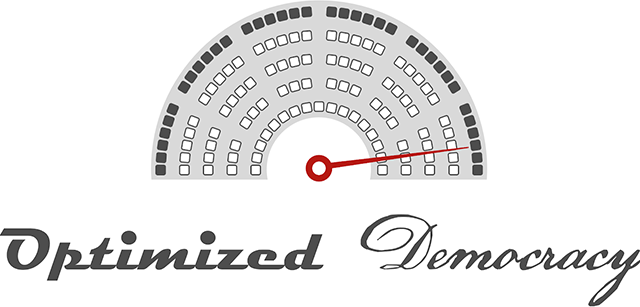News
Images of violent rioters storming the U.S. Capitol during the Jan. 6 insurrection serve as visceral reminders that democracy, and the systems that underpin it, are fragile.
When designing and improving those democratic systems, officials typically draw from the deep wells of public policy and law, but could a technical perspective yield more robust democratic systems?
That question is at the center of a new course at the Harvard John A. Paulson School of Engineering and Applied Sciences and Harvard Kennedy School, Optimized Democracy (CS 238 + DPI 612), taught by Ariel Procaccia, Gordon McKay Professor of Computer Science.
While democracy may be having a moment now, Procaccia says the impetus for this course runs far deeper than recent headlines.
“There are well-recognized difficulties modern democracies are encountering, and at the same time, the way democracy is done hasn’t fundamentally changed in centuries,” he said. “There is a lot we can say from the computer science and mathematical perspective about how to design democratic systems.”
Students in the course explore the mathematical bedrock of democracy itself, and then build upon those foundations by applying computer science theory to some of the most vexing problems facing modern policymakers.
For instance, one topic covered in Procaccia’s course, sortition, dates back to the very first democracy in ancient Athens. Citizens seeking a position on the Athenian governing committee would self-select into a pool of candidates, intended to be generally representative of the city population, and then magistrates would be chosen by lot.
Fast forward 2,500 years and this method is still being used to form citizens’ assemblies. These assemblies have been used most prominently in Ireland to discuss constitutional reform and in France and the U.K. to debate environmental issues.
But there’s a problem.
“There is this tension between giving everyone a fair chance to participate in the citizens’ assembly, and this idea that we want to represent the population at large. The people who volunteer have a large self-selection bias,” he said. “That leads to very compelling algorithmic questions of how to balance these issues.”
Another democratic system that could benefit from more mathematical rigor is the process of redistricting.
After the decennial U.S. Census, states are allocated congressional seats through a process called apportionment, and then must redraw congressional districts so they all contain roughly the same population.
Legal constraints exist to minimize gerrymandering, engineering maps for the partisan advantage of one party. Even though congressional district maps have been challenged in court many times—leading to more than a dozen cases in the U.S. Supreme Court alone—the practice of gerrymandering remains common and difficult to prove.
Mathematicians have shown that statistical tools can prove that a map has been engineered for partisan advantage; one method calls for comparing a suspicious map to thousands that are randomly generated to account for only legal and geographic constraints. And computer scientists have begun using computational techniques to design congressional district maps in a way that is rigorous, provably fair, and satisfies all legal constraints, Procaccia said.
“The biggest challenge of applying computer science to these types of problems is the conceptual challenge. In most computational problems, the objective is pretty clear cut, like some type of performance metric,” he said. “To apply mathematical or computational thinking, you need some kind of quantitative measures to evaluate what you are doing and optimize for that. Often, nailing down what these measures should be, or what are rigorous guarantees that you can provably satisfy, is the most challenging part.”
And even if a computer scientist is able to design a mathematical framework that can be quantitatively tested and proven, other hurdles exist. For one, researchers must be able to effectively communicate that algorithmic solution to political stakeholders.
Sometimes, a robust solution that may be mathematically sound, isn’t one policymakers can accept for legal, political, or historical reasons that a purely technical approach may overlook.
That’s why Procaccia cautions his students that tackling problems of democracy with a mathematical mindset is as much about collaboration as it is about computation.
“My hope is that all of this could lead to fundamentally new ideas about how to apply these tools to democratic systems,” he said. “This feels like only the beginning. As mathematicians and computer scientists, there is so much we can say and so many ways we can help. When more people are aware of what we can contribute from a more rigorous viewpoint, more of these important discussions will happen.”
Topics: Academics, Computer Science
Cutting-edge science delivered direct to your inbox.
Join the Harvard SEAS mailing list.
Press Contact
Adam Zewe | 617-496-5878 | azewe@seas.harvard.edu



